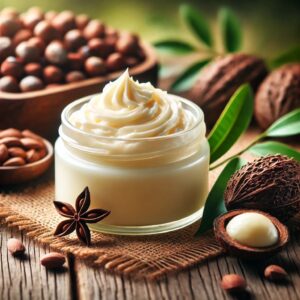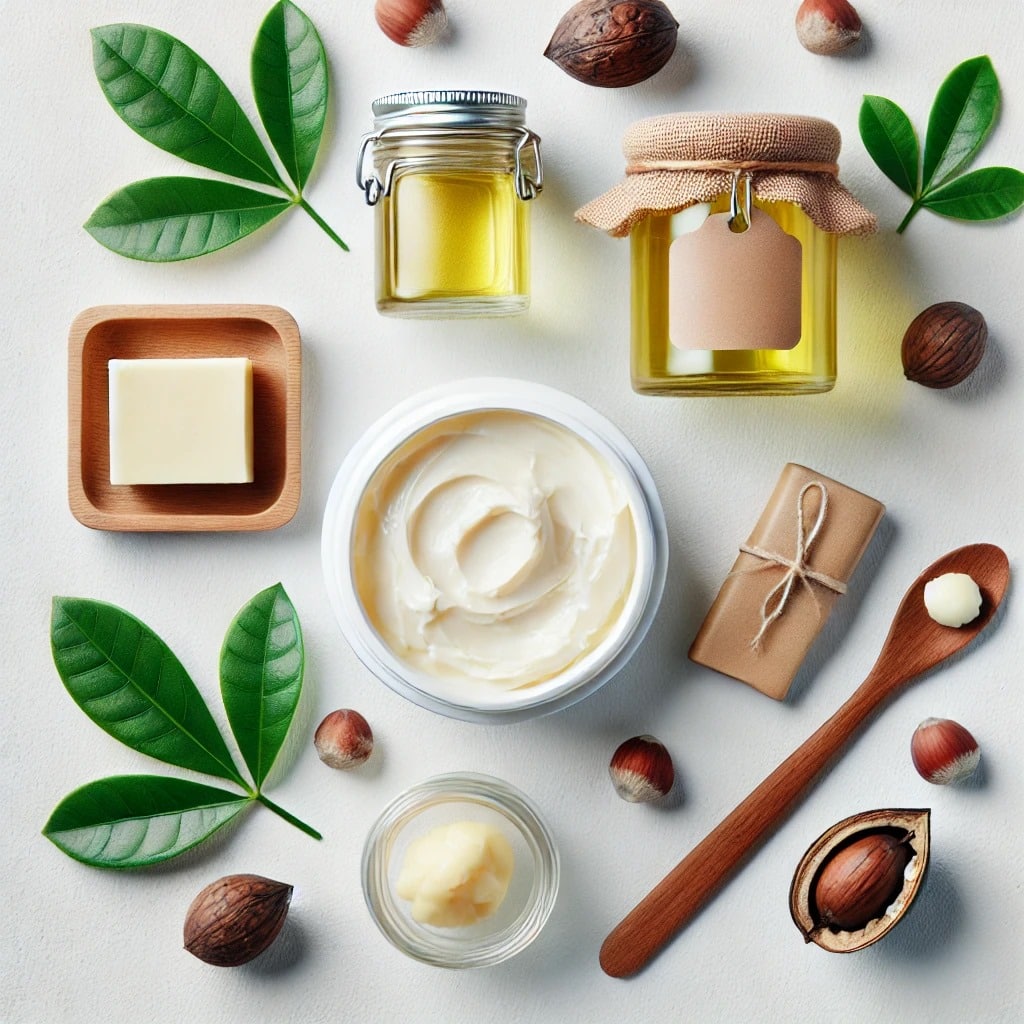Shea butter comes from the nuts of the African shea tree (Vitellaria paradoxa), and it has earned a strong reputation for its ability to hydrate and heal the skin. Shea Butter Skin Benefits include addressing common skin concerns and breaking down its step-by-step production process.
Can Shea Butter Lighten Stretch Marks?
Because it contains vitamins A and E, Shea Butter Skin Benefits support skin repair and boost elasticity. When applied regularly, it helps improve skin texture and reduces the visibility of stretch marks. However, it won’t make them disappear completely.
Can Shea Butter Cause Breakouts?
Most people don’t experience clogged pores from using shea butter because it’s considered non-comedogenic. Nevertheless, its thick texture can trap oils if you have oily or acne-prone skin. For this reason, it’s best to do a patch test before applying it to your entire face, as part of understanding Shea Butter Skin Benefits.
Can Shea Butter Help with Acne?
Thanks to its anti-inflammatory properties, Shea Butter Skin Benefits include calming irritated skin. Even so, individuals with acne-prone skin should be cautious. Some may benefit from its soothing qualities, while others might notice clogged pores. Therefore, consult a dermatologist before using it regularly on acne-prone areas.
Does Shea Butter Darken Skin?
No, Shea Butter Skin Benefits do not include darkening skin. On the contrary, its nourishing properties promote an even skin tone. Over time, it may help fade areas of hyperpigmentation by keeping the skin moisturized and healthy.
Can You Refrigerate Shea Butter?
Yes! Storing shea butter in the refrigerator helps preserve its consistency and extend its shelf life—especially in warmer climates. Just make sure to keep it in an airtight container so it doesn’t absorb surrounding odors.
How Is Shea Butter Made?
The production of shea butter involves several traditional steps, mainly carried out by women in West African communities. Here’s how the process works:
- Harvesting: Locals collect ripe shea fruits by hand.
- Processing: They remove the nuts, boil them, and leave them in the sun to dry.
- Crushing: The dried nuts are crushed to extract the inner kernels.
- Roasting: The kernels are then roasted to prepare them for oil release.
- Grinding: Roasted kernels are ground into a thick paste.
- Kneading & Boiling: Water is added, and the paste is kneaded and boiled to extract the fat.
- Filtering & Cooling: The extracted butter is filtered and allowed to cool and solidify.
This method is labor-intensive but essential to local economies.
📽️ Want to see it for yourself? Watch the full process here.
How Does Shea Butter Benefit the Skin?
Shea butter is more than just a moisturizer—it delivers essential nutrients that restore and protect the skin. Shea Butter Skin Benefits also encompass hydration, anti-inflammatory effects, antioxidant protection, wound healing, and anti-aging support. Here’s how:
- Hydration: It locks in moisture and softens rough areas.
- Anti-Inflammatory Effects: It reduces redness, itching, and swelling.
- Antioxidant Protection: It defends the skin from environmental stress.
- Wound Healing: It speeds up the recovery of minor cuts and burns.
- Anti-Aging Support: It smooths fine lines and improves elasticity.


